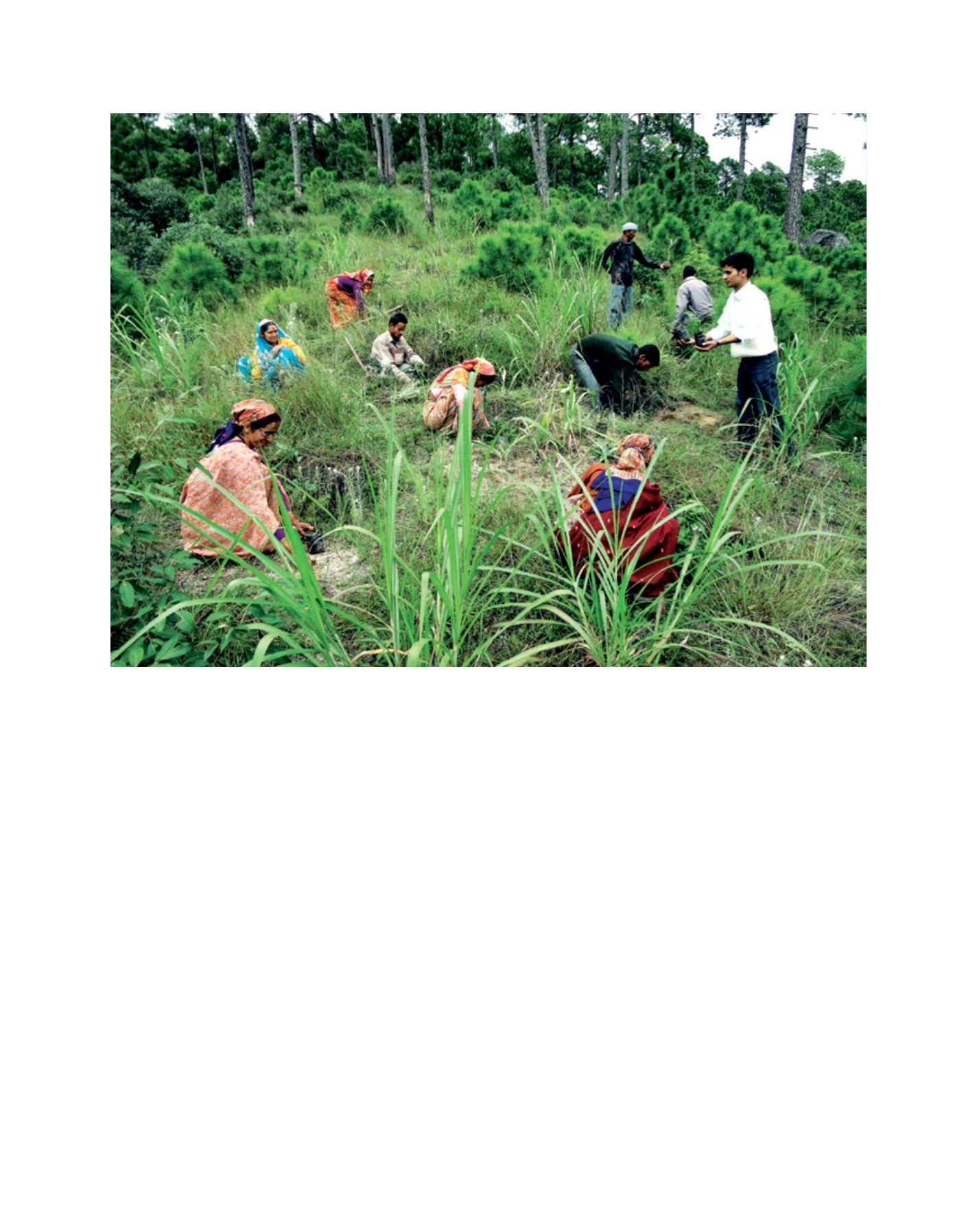

[
] 160
for subsistence living has left the degraded mountain slopes
devoid of vegetation and prone to soil erosion, landslides,
nutrient washout and invasion of weeds. This region
is faced with a vicious cycle between land degradation,
scarcity of natural resources, loss of biodiversity, food
insecurity, poverty and outward migration. Under these
circumstances land degradation is deepening and wasteland
is increasing. These issues need to be tackled to restore
biodiversity and ecosystem services for the revival of dwin-
dling agriculture and threatened livelihoods.
It is evident from the foregoing that a reconciliation of
the livelihood interests (immediate tangible benefits) of
local communities with concern for ecology and biodi-
versity (long-term intangible benefits) is of the utmost
importance for sustainable rehabilitation of degraded waste-
lands. Since its inception in 1988, the GB Pant Institute
of Himalayan Environment and Development (GBPIHED)
has followed several approaches/methods across the IHR
for rehabilitation of degraded watersheds and forests,
pastures/non-arable land and abandoned agricultural
land. Mobilization of stakeholder communities for micro-
planning, selection of suitable multipurpose tree species
(MPTs) based on ecological suitability and the indigenous
knowledge of the community, application of soil and water
conservation (SWC) measures such as contour trenches
(5-6 m long, 30-45 cm feet wide at 5 m intervals), filling
pits dug out for plants with fine soil along with farmyard
manure (20:80 ratio) and biocompost, participatory planta-
tion and aftercare were followed across all the wasteland
rehabilitation models, and are briefly summarized below.
Eco-restoration of degraded watersheds:
A package of
practices named ‘sloping watershed environmental engi-
neering technology’ was devised for treating five degraded
watersheds. This approach integrates SWC measures,
plantation of suitable MPTs for provisioning fodder and
fuelwood, biofencing and aftercare of plants along with
the introduction of low-cost, environment-friendly and
income-generating activities to boost the livelihood of local
people and thereby reduce their dependence on the forests.
Measures such as rooftop rainwater harvesting for house-
hold needs and increasing the water retention capacity of
watersheds were also areas of prime concern. This approach
was used in 55 hectares of degraded land in the Bhimtal
lake catchment area (Nainital district, Uttarakhand). A
total of 38,322 saplings of more than 20 MPTs were planted
on barren hill slopes, where they registered a 16-47 per
cent survival rate after five years. The highest growth
was recorded by
Alnus nepalensis
(211 cm height; 5.6 cm
Plantation activities through women’s participation in a degraded community forest in Champawat
Image: GBPIHED
L
iving
L
and
















